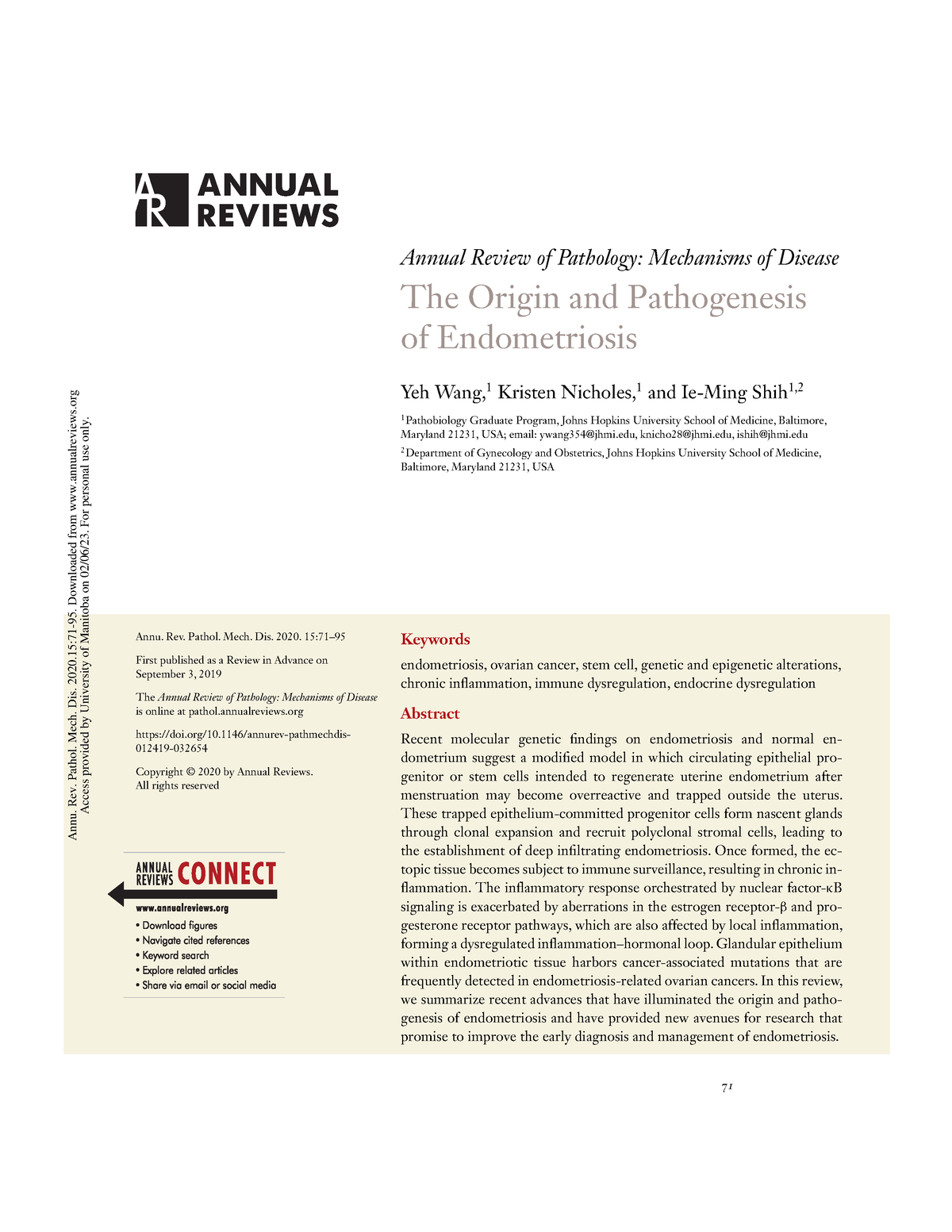Genetic Disease and Therapy.
IF 34.5
1区 医学
Q1 PATHOLOGY
Annual Review of Pathology-Mechanisms of Disease
Pub Date : 2021-01-24
DOI:10.1146/annurev-pathmechdis-012419-032626
引用次数: 17
Abstract
Genetic diseases cause numerous complex and intractable pathologies. DNA sequences encoding each human's complexity and many disease risks are contained in the mitochondrial genome, nuclear genome, and microbial metagenome. Diagnosis of these diseases has unified around applications of next-generation DNA sequencing. However, translating specific genetic diagnoses into targeted genetic therapies remains a central goal. To date, genetic therapies have fallen into three broad categories: bulk replacement of affected genetic compartments with a new exogenous genome, nontargeted addition of exogenous genetic material to compensate for genetic errors, and most recently, direct correction of causative genetic alterations using gene editing. Generalized methods of diagnosis, therapy, and reagent delivery into each genetic compartment will accelerate the next generations of curative genetic therapies. We discuss the structure and variability of the mitochondrial, nuclear, and microbial metagenomic compartments, as well as the historical development and current practice of genetic diagnostics and gene therapies targeting each compartment.遗传疾病和治疗。
遗传性疾病引起许多复杂和棘手的病理。编码每个人的复杂性和许多疾病风险的DNA序列包含在线粒体基因组、核基因组和微生物宏基因组中。这些疾病的诊断已经统一围绕下一代DNA测序的应用。然而,将特定的基因诊断转化为有针对性的基因治疗仍然是一个中心目标。迄今为止,基因治疗分为三大类:用新的外源基因组大量替换受影响的遗传区室,非靶向添加外源遗传物质以补偿遗传错误,以及最近使用基因编辑直接纠正致病基因改变。广义的诊断、治疗和试剂递送到每个遗传室的方法将加速下一代的治疗性基因疗法。我们讨论了线粒体、细胞核和微生物宏基因组区室的结构和可变性,以及针对每个区室的遗传诊断和基因治疗的历史发展和当前实践。
本文章由计算机程序翻译,如有差异,请以英文原文为准。
求助全文
约1分钟内获得全文
求助全文
来源期刊
CiteScore
62.60
自引率
0.00%
发文量
40
期刊介绍:
The Annual Review of Pathology: Mechanisms of Disease is a scholarly journal that has been published since 2006. Its primary focus is to provide a comprehensive overview of recent advancements in our knowledge of the causes and development of significant human diseases. The journal places particular emphasis on exploring the current and evolving concepts of disease pathogenesis, as well as the molecular genetic and morphological changes associated with various diseases. Additionally, the journal addresses the clinical significance of these findings.
In order to increase accessibility and promote the broad dissemination of research, the current volume of the journal has transitioned from a gated subscription model to an open access format. This change has been made possible through the Annual Reviews' Subscribe to Open program, which allows all articles published in this volume to be freely accessible to readers. As part of this transition, all articles in the journal are published under a Creative Commons Attribution (CC BY) license, which encourages open sharing and use of the research.

 求助内容:
求助内容: 应助结果提醒方式:
应助结果提醒方式:


